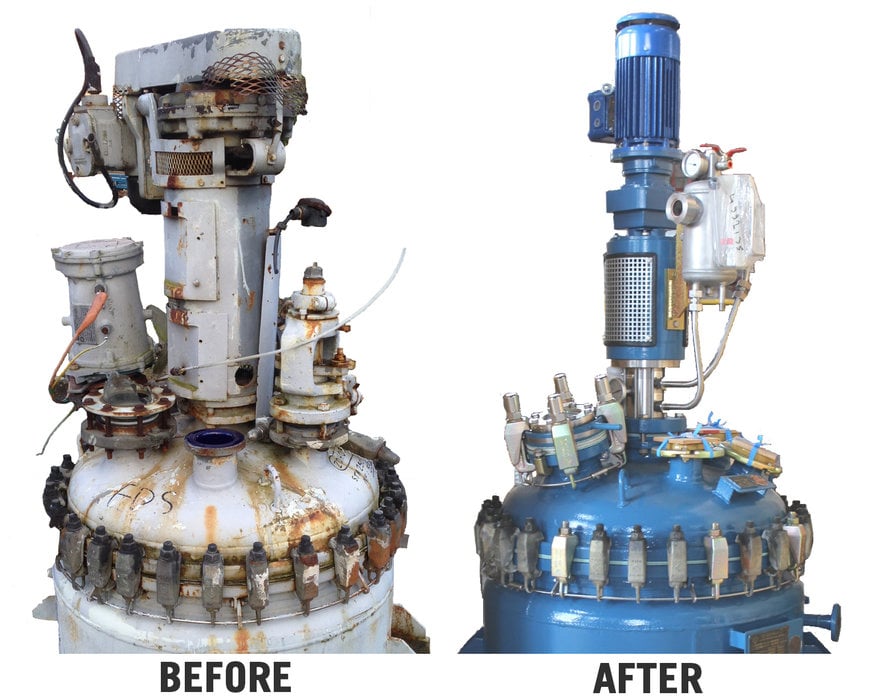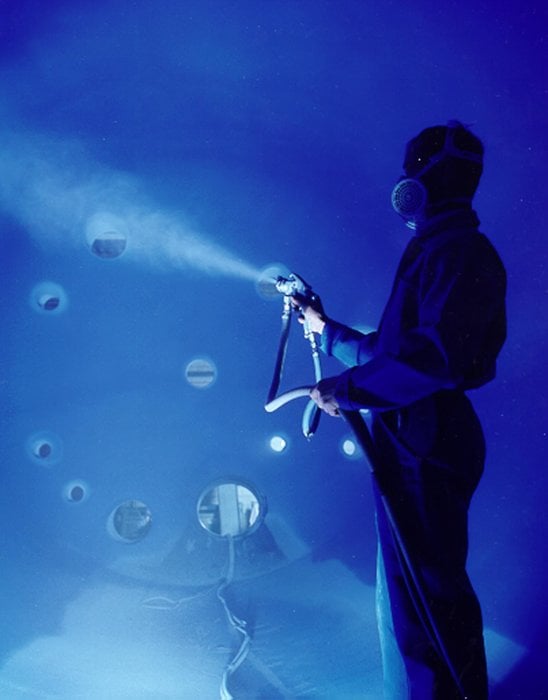www.industry-asia-pacific.com
28
'17
Written on Modified on
Reglass your equipment at De Dietrich Process Systems with our DD3009 Enamel

Reglassing is the process by which older or damaged glass-lined steel equipment is refurbished to like-new condition. All glass-lined reactors, tanks, columns, and accessories such as covers, agitators and baffles, can be reglassed if the steel substrate is in good or repairable condition.
How is Equipment Reglassed ?
The process starts once a vessel has been inspected and approved as a candidate for reglass. Next, the old glass lining is removed by shot-blasting. After any steel repairs and modifications are complete, De Dietrich Process Systems proceeds with the glassing process. Here we fuse corrosion resistant DD3009 enamel onto the prepared steel in our computer controlled electric furnaces. The end product is a high quality, glass-lined steel vessel or accessory. A distinctive feature of De Dietrich’s enamel is that it is manufactured on-site, in France, allowing control over the quality of the Groups’ whole range of equipment.
What are the Benefits of Reglassing ?
Reglassing is ideal for situations when time and cost are a primary issue. The turnaround time is within weeks versus months to fabricate a new vessel and there is nearly a 35% cost savings compared to buying a new vessel. Many companies also find reglassing, which is considered a maintenance budget expenditure, preferable to new capital expenditure. Additionally, upgrades such as OptiMix® baffles (integrated baffles in vessel shell), extra nozzles and insulation rings can be added. All vessels reglassed by De Dietrich Process Systems come with the same standard warranty as new vessels, ensuring you are receiving a vessel "as good as new".
De Dietrich Process Systems also offers reglassing on competitors' equipment. This is the opportunity to reglass equipment from another brand with our high quality DD3009 enamel and benefit also from our know-how thanks to highly skilled enamel sprayers.
When is reglassing needed ?
Glass-lined steel equipment becomes a candidate for repair and reglassing in the following instances:
• The addition of more plugs, patches or sleeves becomes uneconomical, or results in a repair of questionable integrity
• Spalling of the glass due to nascent hydrogen attack
• Galvanic corrosion caused by the use of dissimilar metals in the reactor, like dip pipes, valves and/or repair plugs
• Substantial damage caused from the loss of a repair plug
• Build up of extremely corrosive or erosive products from batch type operations and pilot operations
• Contamination of jacket heating and cooling media, causing accelerated corrosion at the bottom closure ring
• Lack of venting, which can allow corrosion-producing air pockets at the top jacket closure ring
• Damage caused from a component being welded to the substrate during replacement
• Accidental damage to the lining of the vessel
• Mechanical damage, e.g. a workman drops a tool or other object he shouldn’t have in his pocket
• Poor workmanship on a repair
• Thermal shock or stress beyond the safe limits of the glass
What can be combined with reglassing ?
Reglassing service can be combined with a full modernization of the equipment with a real retrofitting of all devices or accessories such as:
• New Drive unit to comply to new regulations (ATEX,…)
• New Support system
• New Jacket
• Optimized agitation including new stirrer with or without new drive unit
• Geometry modification: by addding or blinding nozzles, by adding OptiMix® baffles
• Insulation with foamglas or rockwool, fully cladded with stainless steel sheets
De Dietrich Process Systems offers an affordable reglass and modernization service on own vessels as well as on competitors’ equipment. Even if you are unsure if our equipment qualifies for reglassing, it is an affordable solution worth looking into.
For your reglassing, think De Dietrich. The whole cycle is under control !


